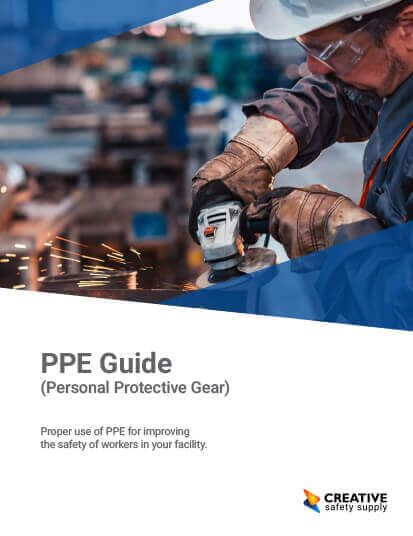
APRs, or air-purifying respirators, are a personal protective equipment device designed to remove contaminants (gases, vapors, particles, and aerosols) from the air before they can be inhaled. These respirators do not supply oxygen but instead uses filters, cartridges, and canisters to remove contaminants as the user is breathing.
OSHA standard 1910.134 covers respiratory protection, defining the following three types of air-purifying respirators:
- Filtering Facepiece Respirators (FFRs) – Sometimes referred to as disposable respirators, these masks form a tight seal around the user’s nose and mouth with a filter to remove particles as air is inhaled through the facepiece. FFRs are disposable and should be thrown away when they can no longer be used. Because FFRs use a filter, this type of respirator is not meant to protect from gases and vapors. Respirators are classified based on filtration capabilities: the amount of particles that will be removed, three types to designate oil resistance; for instance a class P99 FFR will remove at least 99% of airborne particles and is strongly resistant to oil.
- Elastomeric Facepiece Respirators – Elastomeric respirators are reusable PPE devices that utilizes cartridges or filters to protection the worker from gases, vapors, or particles. These filters and cartridges are replaceable and can be swapped out to protect against specific chemicals or other hazards. Elastomeric facepiece and quarter facepiece respirators covers the users nose and mouth with a tight seal while an elastomeric full-face piece respirator includes a clear plastic lens covering the eyes to protect from chemical splashes or irritating vapors.
- Powered Air-Purifying Respirator (PAPRs) – PAPRs are battery powered respirators that pulls air through a filter or cartridge and cleaning it before it reaches the user’s inhalation airstream. These respirators are considered to be a high level of protection compared to non-powered alternatives and the low breathing resistance makes it more comfortable for the user. PAPRs come in both tight and loose face masks and typically attached to a HazMat suit or a pair of coveralls. Loose-fitting PAPRs can be just as effective when paired with a helmet or hood.
It is important respirators are properly fitted to the workers face to ensure a tight seal with no possibility of contaminated air passing through. Additionally, any reusable respirators and related PPE must be cleaned and sanitized before it can be used again.


